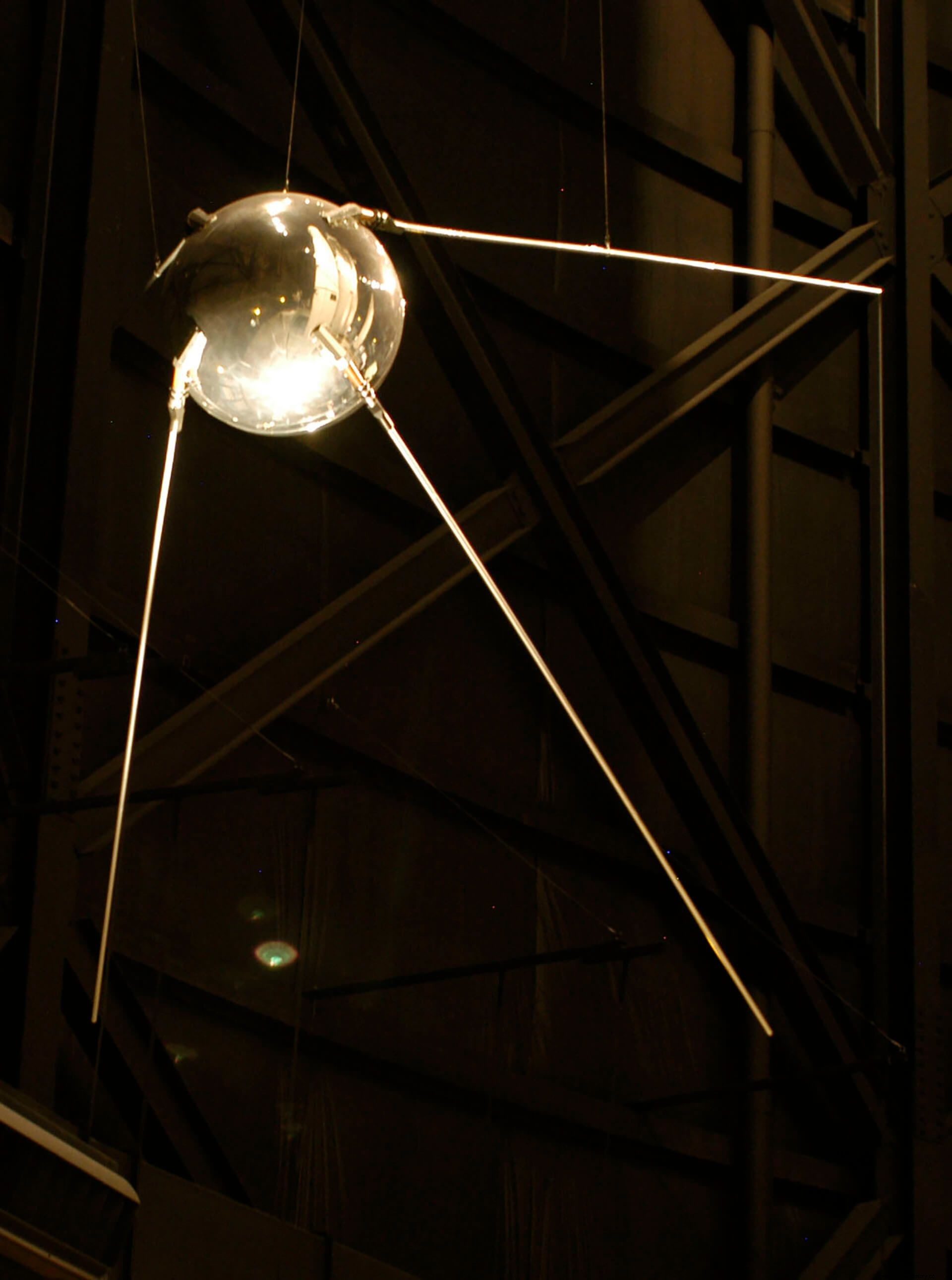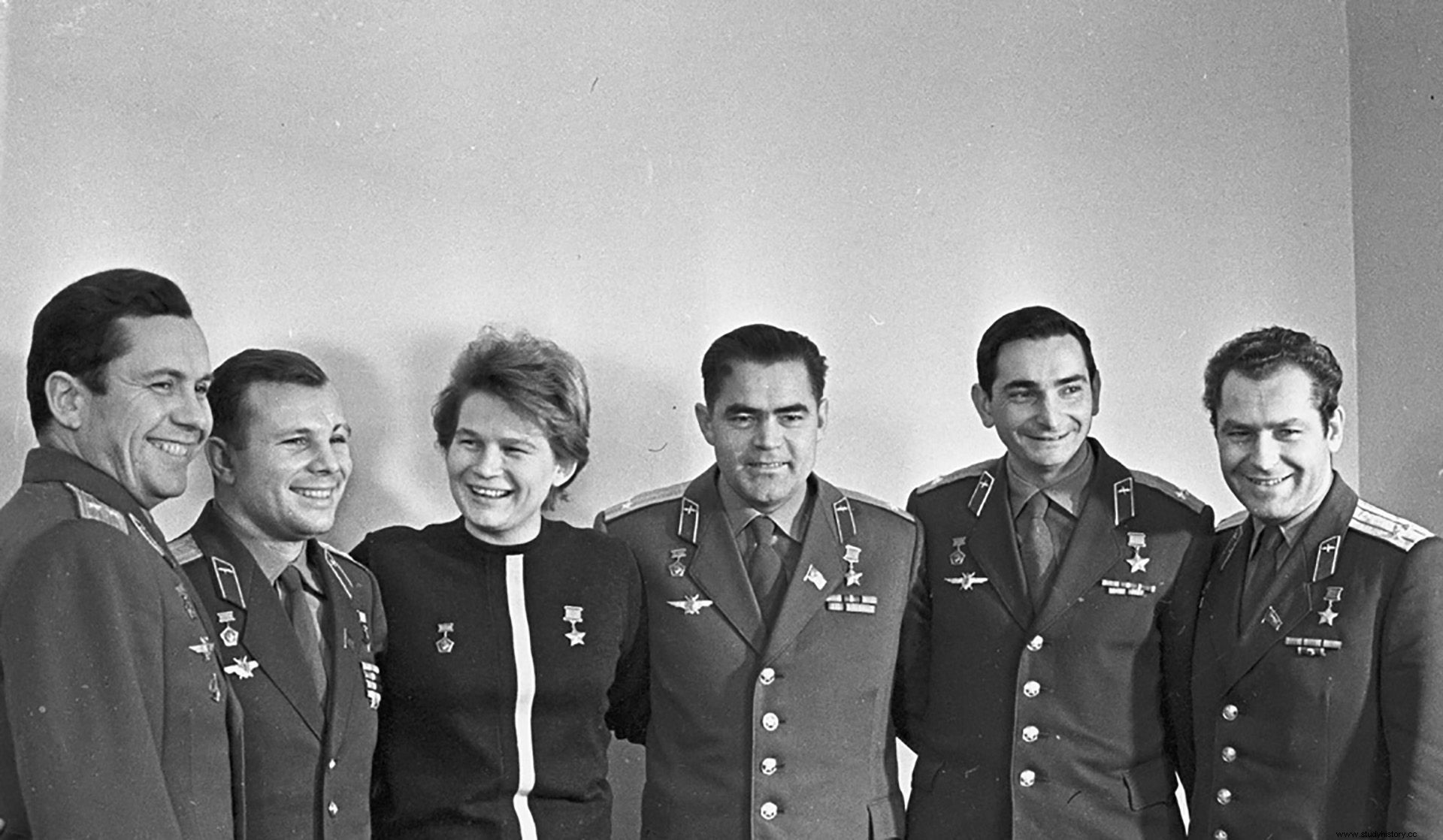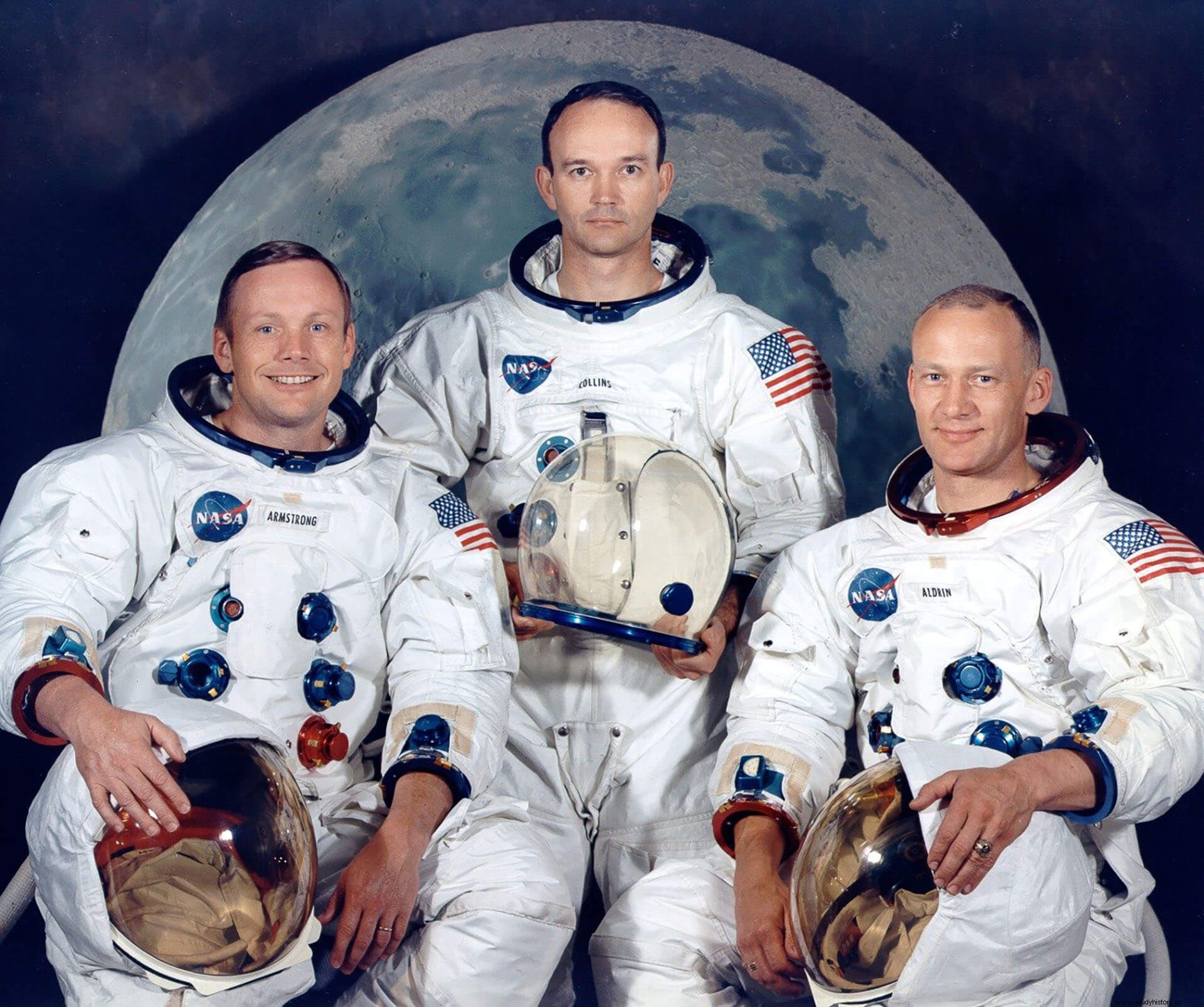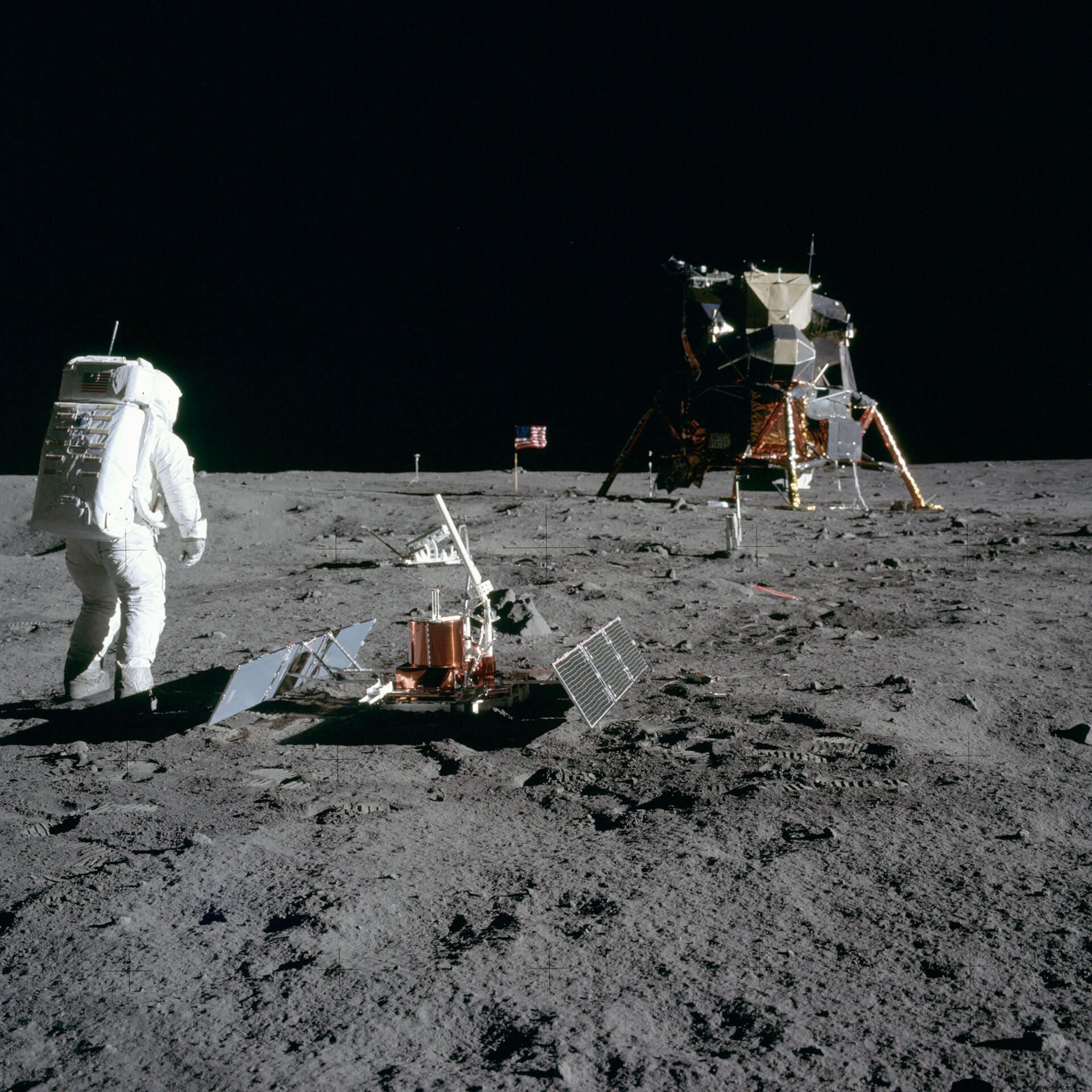The obsession with outer space was born, along with Science, in the philosophical schools of classical Greece, which took its ideas from the Egyptians and Babylonians; and since then we find interest in astronomy in all ages. However, it was not more than half a century ago that space was finally conquered, and it was the Americans who did it. The so-called space race began when on October 4, 1957, at the embassy of the Soviet Union in Washington, Lloyd Berkner, director of the American program of the IGA (International Geophysical Year) announced that a Soviet satellite, the Sputnik 1 , revolved around the Earth at a height of 900 kilometers. Although the US president, Dwight D. Eisenhower (1890-1969) disparagingly referred to the satellite as "a little ball in the air", the truth is that in the midst of the Cold War, the fact revealed not only a technological victory, but also a military threat, since it was a demonstration of Soviet superiority.

After this event, the United States considered the need to demonstrate to the world that its technology was not behind the Soviet, which is why the National Astronautics and Space Administration (NASA) was created. . But not even a month had passed when, on November 3, the world was stunned for the second time:the Soviet Union announced the launch of Sputnik 2 into orbit. , this time with a living being on board. This would be the dog baptized as Laika, and made it clear that the Russians planned the arrival of man on the Moon. This event greatly sensitized public opinion, since there was no means of rescue for the animal, therefore, the food ration on the tenth day contained a poison that should prevent it from suffering from suffocation when the oxygen reserve was consumed. . However, the poison was never used, as the temperature of the capsule rose much higher than expected (40º C) and Laika died six hours after launch.
Meanwhile, NASA presented the project Mercury , intended to put a man into Earth orbit. US Navy specialists advanced the launch of the Vanguard to December 6, but the mission failed and it was not until January 31, 1958 that Explorer 1 entered orbit. Behind him, the Vanguard 1 It achieved its mission on March 17, 1958 and is currently the oldest satellite orbiting the Earth. However, the euphoria of the Americans was short-lived, since in less than three months, the Soviet Union once again amazed the world by putting Sputnik 3 into orbit. , a colossus 3.5 meters long and weighing more than a ton.
The human being reaches space
On April 12, 1961, the Soviet military pilot Yuri Gagarin (1934-1968), became the first astronaut in history aboard the spacecraft Lastochka . What did he feel? The sensation of acceleration made him stick to the seat; the sound of the engines, which had been annoying at first, dimmed as they crossed the sound barrier; a certain emptiness in the stomach, and the effects of supergravity:difficulty in articulating words and narrowing of the visual field. Although the flight was going perfectly, an electrical fault caused Gagarin's return to be by parachute. After flying over 33 countries in less than two hours, he landed in a neighboring town before the stunned gaze of a villager, who, pointing to a nearby stream, told him:"Well, it was not long before you drowned." 
The new Soviet victory in the space race was countered by Alan Shepard's suborbital flight on May 5, aboard the Mercury Redstone 3 rocket . In the summer of that same year, the Apollo program was launched. , as a continuation of the Mercury. missions The following year, John Glenn, at the Friendship 7 , became the first American to orbit the Earth, completing three orbits on February 20, 1962. However, the first two-crew flight also originated in the Soviet Union. Between August 11 and 15, 1962, the Vostok 5 was launched. crewed by cosmonaut Valery Bykovski (1934-) and the Vostok 6 , carrying the first woman in space on board:Valentina Tereshkova (1937-).
The conquest of the Moon
While these events were taking place in the early sixties, John F. Kennedy (1917-1963) announced that, before the end of the decade, the United States would send a man to the Luna and they would bring him back. In fact, in a conversation with the director of NASA he said:
The Soviet leader Nikita Khrushchev (1894-1917), on the other hand, was not so clear and stated that he did not want to be "defeated" by another power, nor the expenses of such a project. In October 1963, he announced that the USSR was not planning any cosmonaut flights to the moon, but also added that they had not abandoned the space race. He proved it when a year later he promised to attempt a moon landing.
After the Ranger probes and the Luna probes Soviet ships landed on the Moon, and after different programs by the rivals in the space race, the first manned flight to the Moon was scheduled for February 21, 1967. Aboard the Apollo 1 The Americans Virgil Grissom (1926-1967), Edward White (1930-1967) and Roger Chaffee (1935-1967) went, who would never reach the expected day. Three weeks earlier, during a test, an electrical spark turned monotony into tragedy. The fire devoured the ship and its three occupants, who suffocated to death, since no one had expected that the materials that made up the ship, fireproof in a normal atmosphere, would turn out to be flammable in an atmosphere of pure oxygen.
After the deep crisis in which NASA was plunged by the Apollo 1 tragedy , the voyages of Apollo 4 , Apollo 5 andApollo 6 they were unmanned and the following ones were a success, testing the suits, the coupling of the ships and the contact with the Moon. The Apollo 10 it managed to descend to a height of approximately 15 kilometers above the lunar surface and photographs were taken of possible landing sites.

Finally on July 16, 1969 from the Apollo 11 was launched at launch complex 39 at 1:32 p.m. . Four days later, its passengers, Neil Armstrong (1930-2012) and Edwin Aldrin (1930-) nicknamed Buzz landed on the Sea of Tranquility, while Michael Collins (1930-) remained aboard the lunar module. The descent was dramatic and tense until the end. As they neared the surface, Armstrong and Aldrin realized that their chosen landing area was the slope of a huge crater with boulders the size of cars. Six and a half hours after the moon landing, Armstrong activates the television camera that will broadcast to the world how a man steps on the Moon for the first time. At 2:56 p.m. on July 21, 1969, he utters his famous phrase; however, the words of the Buzz describing the moment, although less well known, are much more literary:“Beautiful view. It is a magnificent desolation.”
Military applications of the space race
The political-military usefulness of satellites became evident even before the arrival of man on the Moon. In 1961, some images obtained thanks to the American satellite Samos 2 They allowed us to deduce that the USSR had fewer intercontinental missiles than they claimed. In 1963 the Soviets were also aware of their inferiority and decided to point some of their missiles at the United States from their ally Cuba, which would give rise to one of the most serious political confrontations of the Cold War.
Already in the space age, the US military program launched by President Ronald Reagan (1911-2004) in 1983 under the name "Strategic Defense Initiative" and renamed by the press as “Star Wars” , entailed an estimated cost of one and a half billion dollars. This program would never be executed, since a few years later, the disintegration of the Soviet Union between 1989 and 1991 would change the world political landscape. The objective of the program was to destroy the nuclear warheads of intercontinental ballistic missiles between the moment of firing and impact, which entailed a maximum time interval of 20 minutes.

In this way we observe how the tense rivalry between States United States and the Soviet Union covered all political, military and technological fields, including the space race. The competition, both in the technological race, whose most important goals were the Moon and the Internet, and in the arms race, highlighting nuclear weapons, defined the period known as the Cold War.
Fonts
- ES (2006):What did Neil Armstrong say when he stepped on the Moon? Madrid:20 minutes.
- Duran, X. (2007):“Sputnik:the Cold War in orbit” in Quark º 39 (Pages 45-49).
- León Millán, J.M. (2013):“The Cold War and the space race. A brief historical analysis” in Pasaje a la Ciencia . ISSN:1699-6305, No. 15 (Pages 13-21)
- Martos, A. (2009):Brief history of the space race . Ed:Nowtilus.
- Millán Barbany, G. (2000):“The conquest of space” in Cultural horizons:the frontiers of science :1998 . ISBN:84-239-1776-2 (pp. 207-220). Spain:Espasa Calpe
- Montes Moya, F. (2013):“The lunar race” in Passage to Science . ISSN:1699-6305, No. 15 (Pages 21-37).
- Reuters (2013):Neil Armstrong's phrase when stepping on the moon was not improvised. Madrid:EuropaPress
